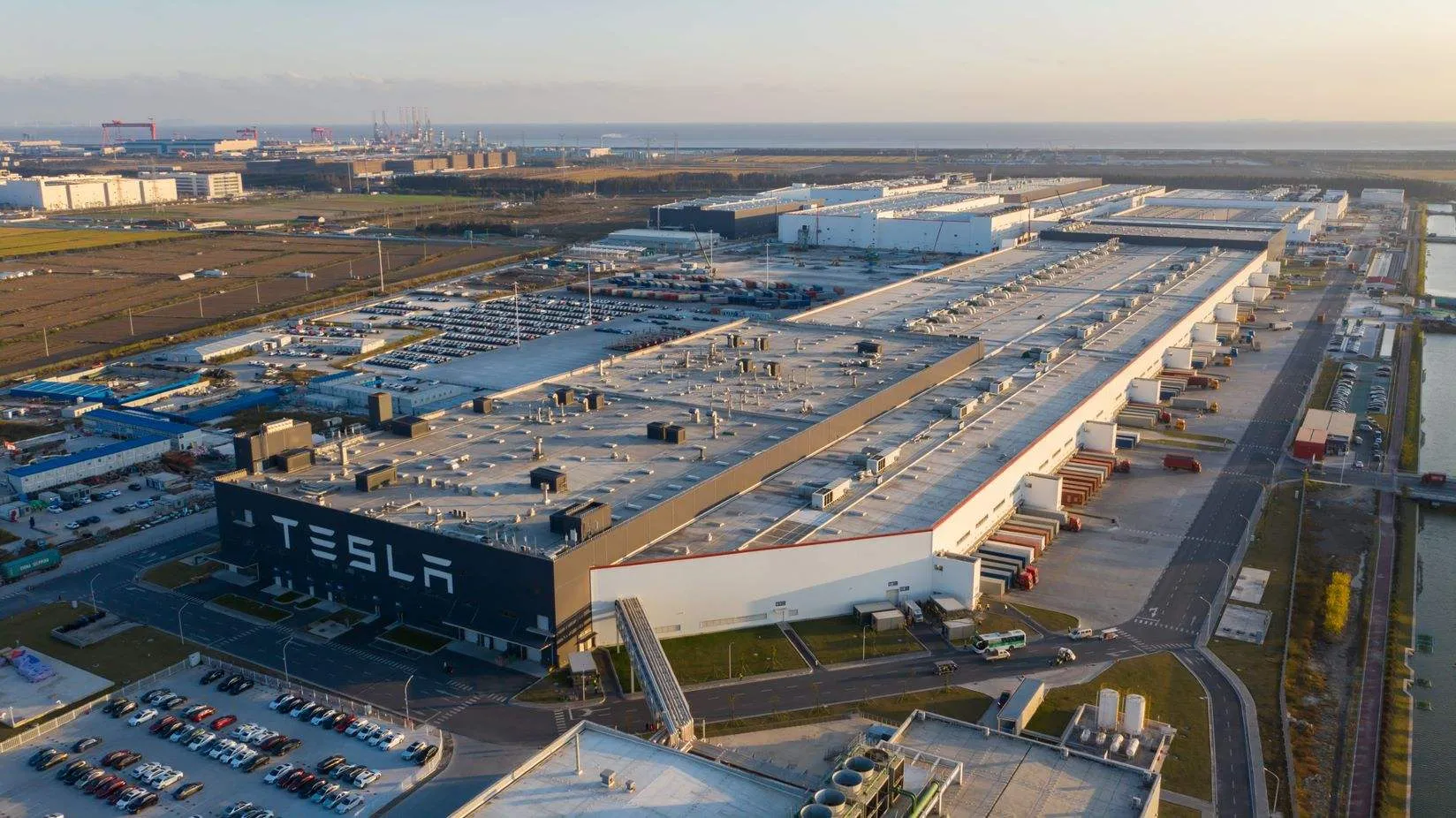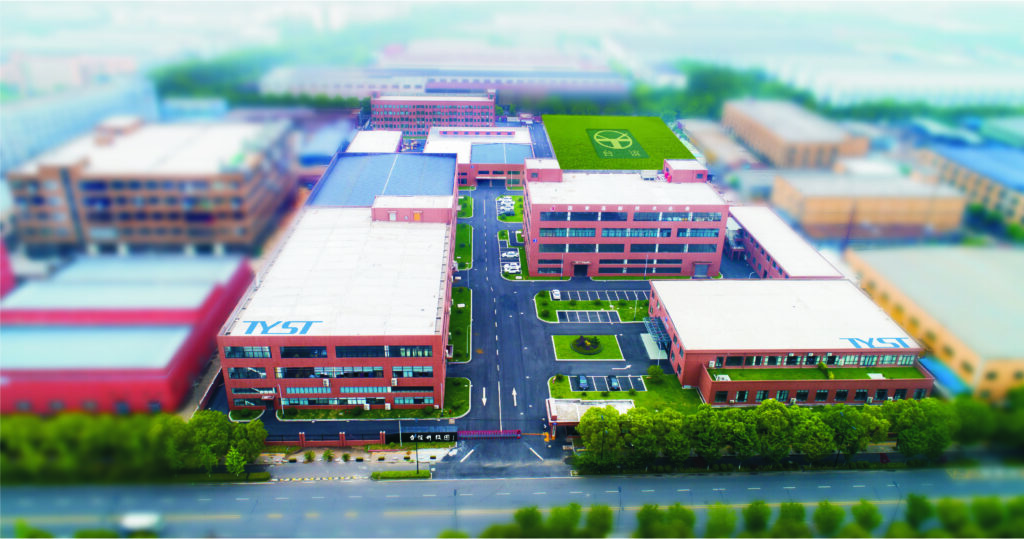
A fire alarm system keeps people safe by spotting fires early. It uses sensors to detect smoke, heat, or gas. Then, it sets off alarms to warn everyone. These systems save lives. For example:
- Buildings with alarms have 54% fewer deaths from fires.
- Homes with full systems lower fire deaths by 9.3 times.
Getting a good fire alarm system protects people and property.
Key Takeaways
- A fire alarm system finds fires early using smoke, heat, or gas sensors. This helps lower fire-related deaths.
- Testing and fixing fire alarms often is important. It ensures they work well during emergencies.
- There are different fire alarm types, like addressable and conventional. These fit different building needs and improve safety.
- Adding carbon monoxide detectors to fire alarms adds extra safety. It helps protect against this unseen and harmful gas.
- Knowing how fire alarms work helps people respond better in emergencies. This keeps everyone in the building safe.
The Role of a Fire Alarm System
Protecting Lives and Property
A fire alarm system helps keep people and property safe. It spots fires early, giving time to leave safely. Modern systems use smart sensors like smoke, heat, and flame detectors. These sensors cut down false alarms and send quick warnings. This can stop fires from spreading fast.
For example, places with heat and gas detectors face fewer losses. Here’s how different sensors help with fire safety:
| Feature | Benefit |
|---|---|
| Photoelectric sensors | Spot smoke well, lower false alarms, and give quick warnings. |
| Heat sensors | React fast to rising heat, reducing fire damage. |
| Infrared sensors | Detect flames early, stopping fires from growing. |
| Carbon monoxide sensors | Find harmful gas, making spaces safer. |
By using these tools together, fire alarms protect property and cut costs from damage or work delays.
Ensuring Early Detection and Response
Finding fires early is key to staying safe. Fire alarms use smoke and heat sensors to catch problems before they grow. This early warning helps you act fast, like leaving the building or using fire sprinklers.
Over time, fire alarm technology has saved many lives. For example:
| Advancement in Fire Alarm Systems | Impact on Fire Fatalities |
|---|---|
| Local alerts and control panels | Gave quick warnings, saving lives and reducing harm. |
| Voice evacuation systems | Clear messages helped people leave faster and safer. |
| Smoke and CO detectors | Key tools that made fire safety better over the years. |
These changes show why having a good fire alarm system matters.
Meeting Safety Regulations
Fire alarms are not just helpful—they’re often required by law. Many rules say homes, offices, and factories must have them. Following these rules keeps people safe and avoids fines.
Checking for fire risks is also important. It helps find weak spots and fix them to prevent fires. Meeting safety standards shows you care about protecting everyone and keeping spaces secure.
Components of a Fire Alarm System

A fire alarm system is an integrated network of components designed to identify and signal the presence of fire or smoke. This setup typically includes detectors, a central control panel, and audible or visual warning devices—all working together to enable a swift emergency response.
To build a comprehensive fire protection strategy, it’s important to understand the key products that make up a complete system. Below is an overview of essential fire safety solutions commonly used across commercial and industrial environments.
Manual Call Points
Manual call points let people start the fire alarm during emergencies. These are placed on walls in easy-to-reach spots like hallways or near doors. You use them by pressing or breaking the glass, which sends a signal to the control panel.
Here’s why manual call points matter:
- Quick alarm start: Pressing the button sets off loud alarms fast.
- Easy to find: Bright colors and good spots make them simple to locate.
- Central alerts: Signals go to a central station to call for help.
- Automatic actions: Advanced ones unlock doors or stop air systems.
- Strong design: Built to work even in tough conditions.
Adding manual call points ensures anyone can sound the alarm if needed.
Fire Hydrant Button
The fire hydrant button is key for buildings with water systems. It lets you turn on the fire hydrant system by hand to spray water on fires. These buttons are near hydrants or pumps and are clearly marked.
When you press the fire hydrant button:
- Water pumps start, sending strong water to hydrants or sprinklers.
- Water flows quickly to help control fires before firefighters arrive.
- It backs up sprinklers, adding extra safety.
Fire hydrant buttons are helpful in big places like factories or warehouses where water systems are vital.
Heat Detectors
Heat detectors find temperature changes that show a fire. Unlike smoke detectors, they sense heat, not smoke. This makes them great for places like kitchens where smoke might cause false alarms.
There are two types of heat detectors:
- Fixed Temperature Detectors: Work when heat passes a set level.
- Rate-of-Rise Detectors: React to fast temperature increases.
Heat detectors are dependable and lower false alarms. They are often paired with other detectors for better fire safety.
To see how heat detectors fit in, here’s a comparison of fire detection levels:
| Detection System Levels | Description |
|---|---|
| Type L: Protection of Life | L1: Covers the whole building. |
| L2: Covers certain areas. | |
| L3: Warns early for evacuation. | |
| L4: Protects escape paths. | |
| L5: Focuses on specific safety goals. | |
| Type P: Property Protection | P1: Protects the entire building. |
| P2: Protects selected parts of the building. | |
| Type M: Manual | Manual alarms without automatic systems. |
Heat detectors are part of Type L or Type P systems based on where they are used. Adding them improves fire detection in tricky areas.
Smoke Detectors
Smoke detectors are key parts of a fire alarm system. They find smoke, which is often the first sign of fire. Early detection gives time to leave and reduce damage.
There are two main types of smoke detectors:
- Ionization Smoke Detectors: These detect fast-burning fires quickly. They use tiny radioactive material to sense smoke.
- Photoelectric Smoke Detectors: These spot slow, smoldering fires better. They work by breaking a light beam when smoke enters.
To keep smoke detectors working well, follow these steps:
- Response Time: Good detectors sound alarms within five minutes of smoke.
- Evacuation Drills: Practice leaving quickly when alarms go off.
- Regular Checks: Inspect detectors often to ensure they work properly.
- Incident Reports: Fewer fire problems mean the system is effective.
- Safety Rules: High scores show the system meets safety standards.
Choose detectors based on the location. For homes, photoelectric ones are great. For businesses, ionization ones work well. Using both types with other fire alarm tools improves safety.
Sounder Beacon
A sounder beacon uses sound and light to warn people of fires. It helps everyone, including those with hearing or vision issues, stay safe.
Here’s how it works:
- Loud Sounds: It makes a noise over 85 decibels to alert people.
- Bright Lights: A flashing light helps in noisy or dark places.
Sounder beacons are useful in big spaces like schools or factories. They are placed where regular alarms might not be heard, like machine rooms. By using both sound and light, they make sure everyone gets the warning.
Fire Display Panel
The fire display panel is like the control center of the fire alarm system. It shows signals from detectors and gives updates about the building’s safety. This helps find fires fast and take action.
Key features of a fire display panel include:
- Zone Alerts: It shows which area has the fire alarm.
- Control Options: You can silence alarms or reset the system here.
- System Updates: It shows if the system is working or needs fixing.
Modern panels often have touchscreens, making them easy to use. They are important for large buildings with many areas. Learning how to use the panel helps you act quickly during emergencies.
Carbon Monoxide Detectors
Carbon monoxide (CO) detectors are very important in fire alarms. They find carbon monoxide, a gas you can’t see or smell. This gas is dangerous because it can make people sick or even kill them without warning. Having CO detectors keeps everyone safe from this hidden danger.
How Carbon Monoxide Detectors Work
CO detectors use special sensors to check for carbon monoxide in the air. If the gas level gets too high, the detector sets off an alarm. Here are the main types of CO detectors:
- Electrochemical Sensors: These are common and very reliable. They use chemicals to sense CO.
- Metal Oxide Sensors: These measure changes in electricity to detect CO.
- Biomimetic Sensors: These change color when they come into contact with CO, like how blood reacts to the gas.
Why You Need CO Detectors
Why are CO detectors so important in fire alarms? Here’s why:
- Early Warning: They alert you before CO becomes dangerous.
- Life-Saving Tool: They stop carbon monoxide poisoning, which can be deadly.
- Fire Detection Help: CO is often made during fires, so these detectors work well with smoke and heat sensors.
Tip: Put CO detectors near bedrooms and fuel-burning devices. Test them often to make sure they work.
Real-Life Example
Think about a hotel with a heating system. If the boiler breaks, it could leak carbon monoxide into rooms. A CO detector would catch the gas early, letting staff evacuate and fix the problem before anyone gets hurt. This shows why CO detectors are a must in fire alarm systems.
Input/Output Module
The input/output (I/O) module is a key part of modern fire alarms. It connects the control panel to other devices, helping them work together. This module makes sure the fire alarm system runs smoothly and reacts quickly in emergencies.
What Does an I/O Module Do?
The I/O module links devices like detectors, alarms, and sprinklers to the control panel. It takes signals from input devices and sends commands to output devices. Here’s how it works:
- Input: Gets signals from detectors or manual alarms.
- Processing: Figures out what action is needed.
- Output: Activates alarms, sprinklers, or other safety tools.
Key Features of I/O Modules
Modern I/O modules have advanced features that improve fire alarm systems. Here are some examples:
| Feature Description | Benefits |
|---|---|
| Intelligent alarm and evacuation system | Allows quiet tests, voice alerts, and emergency messages. |
| Enhanced building protection through danger management | Makes handling emergencies easier and more flexible. |
| Innovative accessory products | Boosts system reliability and performance. |
| Cloud-based solutions for real-time monitoring | Sends instant alerts and allows remote checks and fixes. |
Why I/O Modules Matter
Think of the I/O module as the “brain” of the fire alarm system. Without it, devices wouldn’t work well together. Here’s why it’s so important:
- Better Efficiency: It helps all parts of the system work as a team.
- Custom Actions: You can program it to respond differently to each emergency.
- Improved Safety: It speeds up responses, saving lives and reducing damage.
Note: Update your I/O module’s software often to get the newest features.
Real-Life Example
Imagine a shopping mall with many sections. An I/O module can take signals from smoke detectors in one area and turn on sprinklers only there. This stops extra water damage while keeping people safe. This flexibility makes the I/O module a must-have for fire alarm systems.
Different Types of Fire Alarm Systems

Fire alarm systems are made for different needs. Knowing about them helps you pick the best one for your building.
There are four primary categories of fire alarm systems commonly used in commercial settings:
- Addressable
- Conventional
- Wireless
- Intelligent
Let’s take a closer look at each type to better understand their functions and differences.
Addressable Fire Alarm Systems
Addressable fire alarm systems are smart and very effective. Each device has its own address, so the control panel knows exactly where the problem is. This makes them great for big places like hospitals or tall buildings.
Key Features:
- Unique Identification: Each detector has its own address for quick action.
- Precise Location Detection: Finds the exact spot of danger fast.
- Scalability: You can add more devices as the building grows.
Did you know? Addressable systems cut down false alarms and speed up responses. They are perfect for large buildings.
| Fire Alarm Type | Pros | Best For |
|---|---|---|
| Addressable | Expandable, Accurate, Fewer false alarms | Big buildings (Hospitals, Factories, Schools) |
Conventional Fire Alarm Systems
Conventional fire alarm systems are simple and dependable. They split a building into zones, with detectors in each zone linked to the control panel. When an alarm goes off, the panel shows the zone but not the exact device.
Benefits:
- Affordability: These systems cost less, making them good for small places.
- Ease of Use: They are easy to set up and maintain.
| Fire Alarm Type | Pros | Best For |
|---|---|---|
| Conventional | Reliable, Low-cost, Easy to use | Small places (Shops, Offices, Restaurants) |
Tip: Conventional systems are great for small spaces where knowing the exact fire location isn’t needed.
Wireless Fire Alarm Systems
Wireless fire alarm systems use radio signals or WiFi to connect devices. They don’t need wires, which makes them useful for buildings where wiring is hard to install.
Advantages:
- Flexibility: Easy to set up and move around.
- Aesthetic Appeal: No wires mean a cleaner look.
But wireless systems can have problems in tall buildings. Signals might not always be strong due to interference.
| Metric | Wireless (RF/WiFi) | Wired |
|---|---|---|
| Packet Loss Rate (PLR) | High | Low |
| Packet Failure Rate (PFR) | High | Low |
| Probability of Failure per Hour (PFH) | High | Low |
Note: Better wireless designs improve reliability, but wired systems are still safer for important uses.
Intelligent Fire Alarm Systems:IoT in Fire Safety
Intelligent fire alarm systems are the future of fire safety. The Internet of Things (IoT) is transforming the fire protection industry by enabling real-time data sharing, remote monitoring, and intelligent system integration. IoT-based fire safety systems go beyond basic detection—offering predictive insights, centralized control, and enhanced responsiveness that traditional systems cannot match.
Key Features of Intelligent Fire Alarm Systems
- Real-Time Device Communication: All fire protection components—including detectors, control panels, suppression systems, and emergency signage—are connected via a secure IoT network, enabling synchronized operation and instant updates.
- Cloud-Based Monitoring: Through cloud integration, facility managers can access live status, event history, and system diagnostics anytime, from anywhere—whether on-site or off-premises.
- Smart Analytics & Predictive Maintenance: IoT sensors collect and analyze environmental data to detect anomalies. This helps predict potential hazards and schedule maintenance proactively, avoiding unexpected failures.
- Automatic Alerts & Escalation: In the event of an incident, the system sends real-time alerts to authorized personnel via SMS, email, or mobile app, enabling faster response and clear communication across departments.
- Integration with Building Management Systems (BMS): Tyee’s IoT fire solutions can be seamlessly integrated into existing building management platforms, allowing unified control over fire safety, security, ventilation, and energy systems.
Did you know? These alarms can tell the difference between real fires and harmless things like steam or burnt food.
Benefits of IoT in Fire Safety
| Feature | Description |
|---|---|
| 24/7 Remote Monitoring | Gain full visibility of all fire safety systems across one or multiple sites. |
| Reduced Response Time | Instant alerts and smart routing help shorten emergency response cycles. |
| Lower Operating Costs | Early fault detection reduces maintenance costs and prevents unnecessary downtime. |
| Scalable Architecture | Easily expand coverage as your facility grows—no need for major rewiring. |
| Data-Driven Compliance | Automatically generate logs and reports for audits and regulatory compliance. |
Real-Life Example
Think about a hospital with many rooms and equipment. An intelligent fire alarm allow centralized monitoring of fire alarms, suppression units, and emergency lighting across all facilities. If a device in Building A detects an anomaly, the central platform flags it immediately, alerts staff, and isolates the issue—without manual checks or delays.
With Tyee’s IoT-driven fire protection solutions, businesses gain more than just safety—they gain control, insight, and confidence. Our systems are built for the future, combining reliability with digital intelligence to meet the evolving demands of modern infrastructure.
How a Fire Alarm System Works
Knowing how a fire alarm system works shows its importance. It helps protect people and property. The process has three main steps: finding fires, sending signals, and setting off alarms.
How Fires Are Detected
The first step is spotting signs of a fire. Modern systems use smart sensors to find smoke, heat, or harmful gases like carbon monoxide. These sensors work together for quick and accurate detection.
Here are common ways fires are detected:
- Smoke Detectors: Find smoke in the air, often the first fire sign.
- Heat Detectors: Notice fast temperature changes or high heat levels.
- Carbon Monoxide Detectors: Spot carbon monoxide, a dangerous gas from fires.
- Multi-Sensor Detectors: Combine smoke, heat, and gas detection for better results.
Did you know? Multi-sensor detectors lower false alarms by checking many factors first.
In places like schools or offices, detection tools can include wall buttons, desk triggers, or even phone apps. These tools allow both automatic and manual fire alerts.
Sending Signals
After detecting a fire, the system sends a signal to warn others. This step uses strong communication tools to make sure the message is delivered quickly.
Modern systems use these technologies to send signals:
- Wi-Fi and Cellular Networks: Work well in large or remote buildings.
- LAN Connections: Provide fast and secure data sharing inside buildings.
- Cloud-Based Systems: Allow real-time updates and remote monitoring.
In 2023, experts stressed the need for reliable signal systems. Old methods, like landlines, often fail. Upgrading to cellular or cloud systems ensures faster alerts and better safety.
Setting Off Alarms
The last step is turning on alarms to warn people and emergency teams. This uses different methods to make sure everyone gets the warning.
Here’s how alarms work:
- Loud Sounds: Sirens tell people to leave right away.
- Flashing Lights: Help those who can’t hear alarms.
- Digital Alerts: Messages go to emergency contacts and monitors.
- Automatic Actions: Doors unlock or air systems shut down for safety.
Tip: Test your fire alarm system often to ensure it works well.
A central control panel is key during alarms. It shows live updates, like where the fire is, and keeps records for later review. This helps emergency teams act quickly and effectively.
| Component | Description |
|---|---|
| Activation Devices | Wall buttons, desk triggers, phone apps, and wearable tools. |
| Communication Tools | Wi-Fi, 4G/5G, LAN, and cloud systems for reliable alerts. |
| Alarm Methods | Loud sirens, flashing lights, and digital messages for warnings. |
| Central Control Panel | Shows live updates, video feeds, and logs for better response. |
| Backup Power | Batteries and failover systems keep alarms working during outages. |
| Automatic Actions | Sends alerts and reports fire locations instantly. |
By using these parts together, fire alarm systems ensure quick and organized responses to fires.
Actions After Alarm Activation
Alerting Occupants
When a fire alarm goes off, the main goal is to warn everyone. Modern systems use sound, flashing lights, and voice messages to alert people. Loud alarms rise above background noise. Flashing lights help those who can’t hear well. Voice messages give clear instructions to evacuate safely. These messages can be live or pre-recorded.
Here’s how alarms follow safety rules:
| Rule Section | What It Means |
|---|---|
| 9.6.3.5 | Alarms must include both sound and flashing lights (NFPA 72). |
| 9.6.3.7 | Alarm sounds must be louder than normal building noise. |
| 9.6.3.8 | Alarm sounds must not match other building noises. |
| 9.6.3.9 | Voice messages should guide people during evacuation. |
| 9.6.3.6.2 | Only areas in danger may need to evacuate right away. |
| 9.6.3.6.3 | Help must be available for those who can’t leave on their own. |
Tip: Practice fire drills often. This helps people know alarms and follow evacuation plans.
Activating Safety Mechanisms
Fire alarms also start safety tools to stop fires and protect people. These tools include sprinklers, shutting off air systems to stop smoke, and unlocking emergency exits. Advanced systems use special modules to make these actions work together smoothly.
Important standards ensure these tools work well:
| Standard | What It Covers |
|---|---|
| ISO 7240-14 | Explains how to design and care for fire alarm systems. |
| NFPA 72 | Sets rules for installing and using fire alarms in the U.S. |
| TS 54-14 | Gives advice on planning and maintaining fire detection systems. |
Did you know? New systems can focus on certain areas to reduce water damage while stopping fires.
Notifying Emergency Services
When the alarm sounds, it also alerts emergency services. This can happen automatically or through a monitoring center. Firefighters get updates about the fire’s location and size in real time with cloud-based systems.
Good emergency response needs preparation. Buildings with clear plans, safe zones, and regular drills help everyone know what to do.
| Method | What It Does |
|---|---|
| Emergency Plans | Show escape routes and ways to communicate. |
| Regular Drills | Test and improve how people respond to emergencies. |
| Fire Safety Rules | Combine safety systems with regular practice. |
Note: Make sure your fire alarm connects with local emergency services for faster help.
By warning people, starting safety tools, and calling for help, fire alarms keep everyone safer during fires.
A fire alarm system is important for keeping people and property safe. Taking care of it regularly makes sure it works in emergencies. It also helps meet safety rules and avoids fines. Experts check the system to keep it running and follow local laws. Many governments now ask businesses to maintain fire safety systems. This shows why taking care of them matters. Having a good fire alarm system at home or work improves safety and gives peace of mind.
Tip: Plan regular checks to keep your fire alarm system ready and working well.
FAQ
What is the difference between addressable and conventional fire alarm systems?
Addressable systems show the exact fire location using device addresses. Conventional systems divide buildings into zones, showing only the affected area. Addressable systems work best for large places. Conventional systems are better for smaller spaces.
How often should you test a fire alarm system?
Test your fire alarm system every month. Regular testing ensures alarms and detectors work well. Get professional inspections once a year for full maintenance.
Can fire alarm systems detect carbon monoxide?
Yes, many systems have carbon monoxide detectors. These sensors find harmful gas early to prevent poisoning. Place them near bedrooms and fuel-burning devices for better safety.
Are wireless fire alarm systems reliable?
Wireless systems work well if installed properly. They use Wi-Fi or radio signals to connect devices. Tall buildings might have signal problems. Wired systems are safer for important uses.
What should you do if a fire alarm goes off?
Leave the building right away and follow evacuation routes. Don’t use elevators and help others if needed. Call emergency services after reaching a safe place. Fire drills help you prepare for emergencies.









